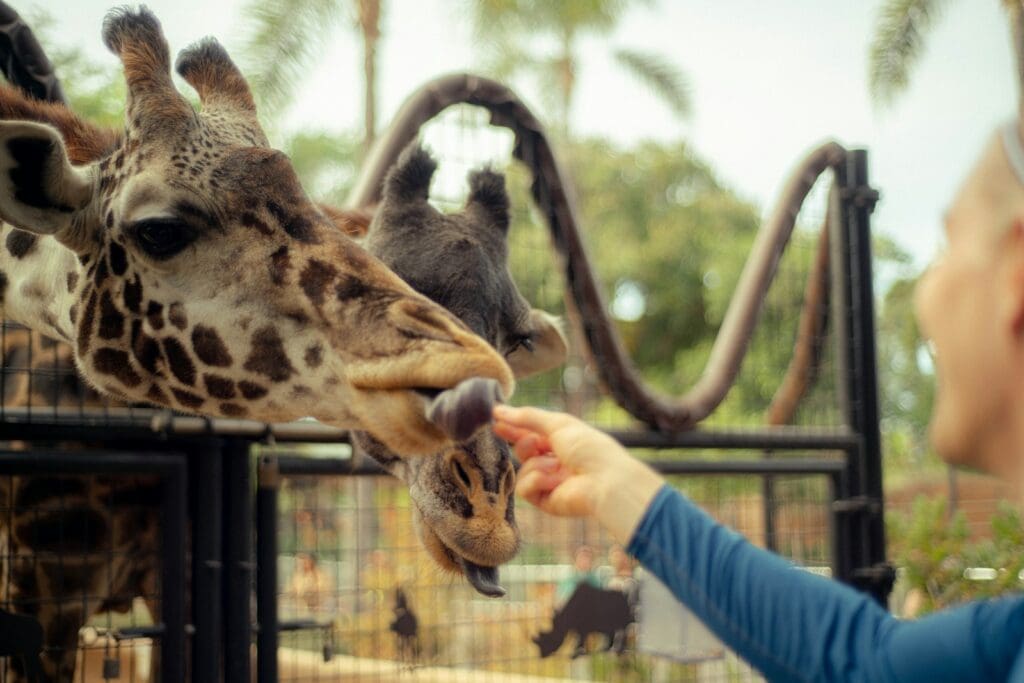
Enhancing Health in Modern Zoos
Innovative approaches to animal nutrition in modern zoos represent a pivotal evolution in ensuring the welfare of animals in captivity. Nutritional science in zoos does much more than just satisfy hunger; it is an intricate process tailored to the unique dietary needs of each species, playing a crucial role in their overall health, behavior, and quality of life. By simulating the natural diets of animals as closely as possible, zoos are able to promote natural foraging behaviors, reinforcing the physical and psychological well-being of the zoo inhabitants.
The importance of proper animal nutrition extends beyond individual health—zoo nutrition is integral to global conservation efforts. Through carefully planned feeding programs, zoos contribute to the sustainability and reproductive success of endangered species, thereby supporting biodiversity. Additionally, these practices offer invaluable data for research, advancing scientific understanding of species-specific dietary requirements and leading to breakthroughs in both in-situ and ex-situ conservation strategies.
Education is another critical component of nutrition programs in zoos, with the feeding process serving as an educational tool for visitors. As they observe feeding sessions, the public gains insight into the complexity of animal care, the natural behaviors of different species, and the challenges involved in conservation work. Through these interactive learning experiences, zoos foster a connection between humans and wildlife, encouraging a sense of responsibility and stewardship towards the natural world.
Nutritional Innovations for Zoo Animals
Modern zoos have made significant strides in the way they approach the nutrition and dietary needs of the animals in their care. The development of comprehensive feeding programs is crucial for the health and well-being of zoo residents, ensuring they receive a balanced diet that closely mimics what they would encounter in the wild.
Diet Formulation and Food Diversity
In zoo nutrition, diet formulation takes priority. Nutritionists and animal care professionals work collaboratively to create diverse menus that reflect the natural diets of different species. This is guided by an evidence-based approach, where diets are formulated based on thorough research. For instance, at the Smithsonian’s National Zoo, the department of nutrition actively tailors the dietary regimes to promote optimal health among various animals.
Food diversity is not just about serving different foods; it’s also about catering to the unique nutritional requirements and feeding behavior of each species. Zoos often use behavioral enrichment techniques to stimulate natural foraging activities, which not only satisfies nutritional needs but also promotes psychological well-being.
Carcass Feeding and Natural Foraging
Carcass feeding is an innovative feeding strategy that several zoos have implemented, as it allows carnivorous animals to engage in behaviors they would exhibit in the wild. Merck Veterinary Manual highlights the benefits of such a holistic feeding approach that enhances both the behavior and nutrition of zoo animals. It promotes natural behaviors such as tearing and chewing, which are essential for dental health and overall well-being.
Natural foraging is similarly critical, encouraging animals to spend time and energy as they would when searching for food in their natural habitats. This type of feeding stimulates their senses and provides physical activity, benefiting their nutritional intake and addressing certain behavioral needs.
Supplements and Specialized Feeds
To combat nutritional deficiencies and address specific health issues, supplements and specialized feeds play a pivotal role in zoo animal nutrition. These may include vitamins, minerals, or other necessary compounds that the animals might not sufficiently receive from their standard diets.
In some cases, zoos utilize specially formulated feeds to cater to the unique dietary needs of certain species or individuals with health problems. These feeds are often developed with the help of research conducted by zoo nutritionists, ensuring they meet the precise requirements for optimal health. Customizing diets with these specialized additions is a reflection of the constant efforts to improve animal care through nuanced nutritional intervention.
Animal Welfare and Behavioral Management
In modern zoos, enhancing animal welfare involves a blend of nutritional science, habitat design, and behavioral management. By employing strategies like environmental enrichment and behavioral training, zoos aim to fulfill the five freedoms and promote positive welfare states.
Environmental Enrichment Strategies
Environmental enrichment seeks to stimulate natural behaviors and prevent boredom in captive animals. Zoos often introduce novel objects, puzzle feeders, and habitats that mimic an animal’s natural environment. For example, primates may be provided with branches that encourage climbing and swinging, while large carnivores might encounter olfactory cues that stimulate their hunting instincts. This approach aligns with the “Five Domains” model, enhancing the physical and mental stimulation of animals.
Monitoring Animal Health and Welfare
The welfare of zoo animals is continually assessed using animal-based indicators such as behavior, physiology, and reproduction. These indicators help caretakers gauge the effectiveness of welfare programs. Regular health check-ups go beyond just preventing diseases; they monitor the animal’s diet, the impact of environmental enrichment, and overall quality of life. Zoos engage in animal welfare science to objectively measure well-being, ensuring that each individual animal experiences as many positive welfare states as possible.
Behavioral Training for Veterinary Care
Behavioral training is crucial, as it allows animals to participate willingly in their own healthcare. Training can help animals to remain calm during routine examinations and when there are medical emergencies. Through positive reinforcement, animals learn to present body parts for inspection, tolerate minor procedures, or even undergo more complex veterinary interventions without the stress of restraint. Such cooperative behaviors directly contribute to the animal’s veterinary care, decreasing the need for anesthesia and thereby reducing risk.
Collaboration and Education in Zoo Conservation
Modern zoos are transforming their roles to become centers of excellence in conservation and education. They prioritize an integrated approach to wildlife conservation, combining active research, education, and collaboration among various stakeholders, including accredited zoos and aquariums.
Integrating Conservation and Research
In the realm of conservation efforts, zoos are playing an increasingly pivotal role. They engage in collaboration with field-based naturalists and scientists to create comprehensive conservation strategies. For instance, studies like those found within Frontiers in Psychology illustrate zoos’ investment in wellbeing initiatives that complement their conservation goals. Additionally, global alliances such as those fostered by the World Association of Zoos and Aquariums (WAZA) contribute to the amplification of zoos’ conservation impact. These efforts are especially important in the care and management of endangered species, where zoos are involved in breeding programs and reintroduction efforts.
Educational Programs and Visitor Engagement
Education is another cornerstone of the modern zoo. Compelling educational programs aim to raise awareness and drive engagement with wildlife conservation. These programs often showcase the zoo’s inhabitants as animal ambassadors, providing tangible, relatable experiences for visitors. For example, studies featured in publications like MDPI have indicated that animal ambassadors foster specific conservation-based knowledge gains and positively influence visitors’ behavior. On-site signage, interactive exhibits, and guided tours all form critical touchpoints that engage visitors and provide them with actionable conservation knowledge. Accredited zoos and aquariums place a strong emphasis on these educational initiatives, underscoring their belief in the power of informed engagement to drive conservation efforts outside their walls.
Adopting Technology in Animal Nutrition and Welfare
The integration of technology into zoo management significantly enhances both the precision in animal nutrition practices and the complexity of welfare monitoring efforts.
Data Collection and Automated Monitoring Systems
With the adoption of automated monitoring systems, zoos are able to gather vast amounts of data on animal nutrition in real-time. These systems can include cameras and CCTV that continuously record feeding patterns and dietary intake. This technology assists caretakers by providing detailed reports, allowing for timely adjustments to diets to ensure optimal animal health.
- Key Benefits:
- Continuous data collection
- Precise tracking of individual dietary intake
- Greater efficiency in diet management
Caretakers can easily monitor the nutritional welfare of animals, often leading to proactive health care measures.
Applying Machine Learning for Animal Behavior Analysis
Incorporating machine learning into the analysis of animal behavior marks a transformative leap in scientific research related to zoo animals’ welfare. By analyzing data collected from monitoring systems, specialists can identify patterns in behavior that correlate with the nutritional status. This technology aids in understanding the subtlest changes in behavior, potentially indicating deficiencies or excesses in nutrition.
- Machine Learning Insights:
- Identifies behavioral changes related to diet
- Helps in customizing nutritional plans
- Enhances the overall welfare of the zoo inhabitants
Through the combination of data science and machine learning, zoo staff are equipped with powerful tools to ensure animals receive the most refined care tailored to their individual needs.



